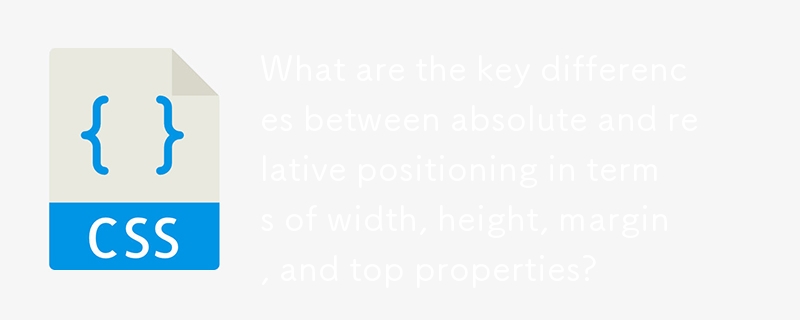
Absolute vs. Relative Position: Dimensions and Positioning
The distinction between absolute and relative positioning in CSS plays a crucial role in controlling the size and location of elements.
1. Width and Height:
-
Absolute: Absolute positioned elements only take up the space occupied by their content. Unless explicitly set, their width and height will not conform to their parent container.
-
Relative: Relative positioned elements automatically take up 100% of the available width within their parent container.
2. Height:
-
Absolute: Absolute positioned elements can take up 100% of the height of their parent container, even if the parent container has no defined height.
-
Relative: Relative positioned elements require the parent container to have a defined height to occupy 100% of it.
3. Margin and Top Properties:
-
Margin-top: Affects the top margin of both absolute and relative positioned elements.
-
Top: Affects the top position of relative positioned elements by shifting them within the parent container. Absolute positioned elements are unaffected.
4. Default Positioning:
-
Absolute: If top and left properties are not explicitly set, the element will be positioned at the default top:auto and left:auto. This means the browser will attempt to position the element as it would if it were positioned statically.
The above is the detailed content of What are the key differences between absolute and relative positioning in terms of width, height, margin, and top properties?. For more information, please follow other related articles on the PHP Chinese website!






